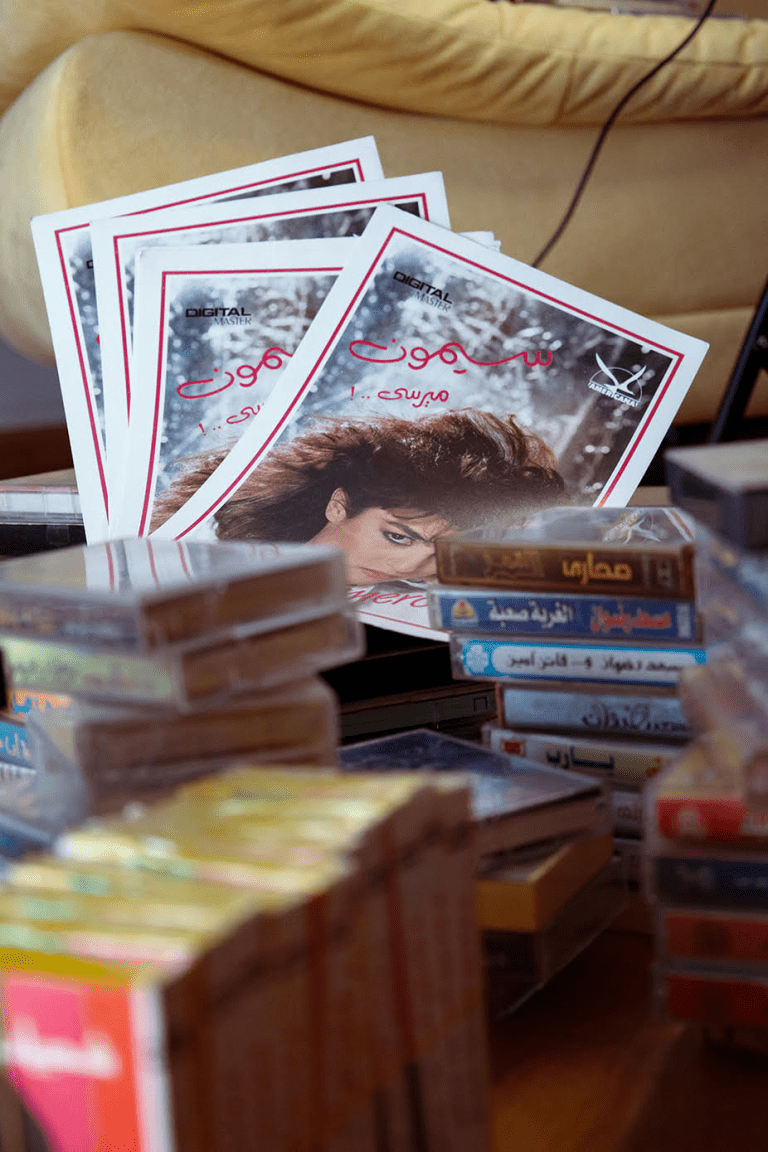Before Spotify playlists and YouTube channels, Egypt’s music lived on cassette tapes — and their covers were a whole art form of their own. Today, artist and curator Amr Hamid is making sure that era isn’t forgotten. Through his project Egyptian Cassette Archive, he’s reviving a golden chapter in Egypt’s sonic and visual culture.
How the Archive Began
In 2016, Amr got a surprise delivery from his dad — a box of childhood stuff. Among the nostalgia? A stash of cassette tapes. But it wasn’t just the music that stood out. The cover art sparked questions about who designed them and what stories they told.
That curiosity turned into a full-blown research project: archiving Egypt’s cassette tapes, preserving their artwork, and tracing the people behind the designs.
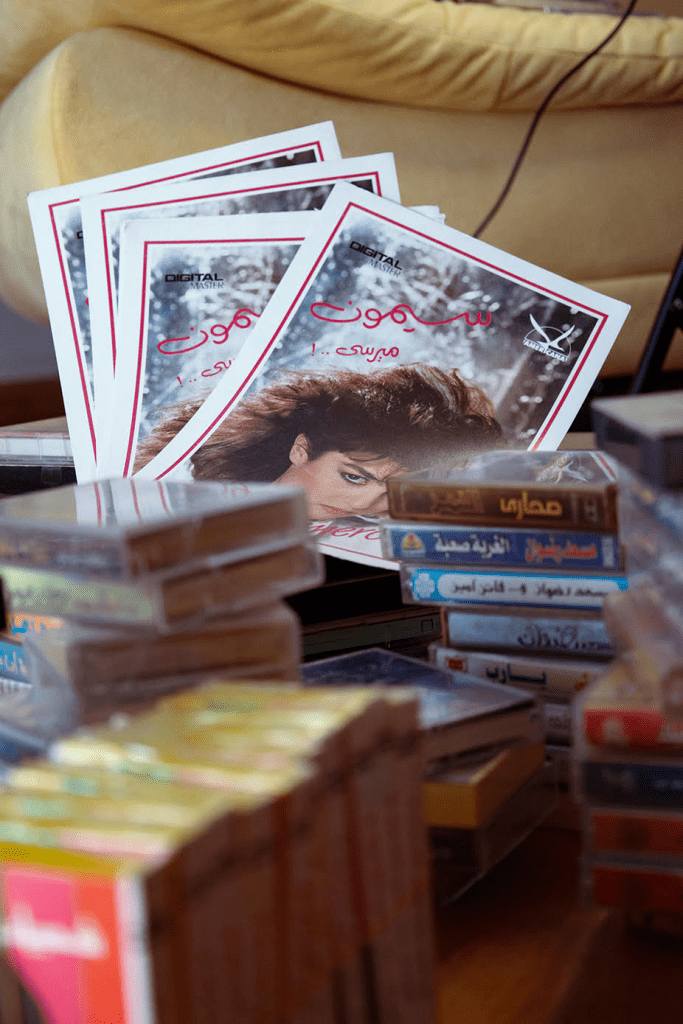
Spotlighting the Designers Behind the Music
While we all know the stars on the covers — like Ahmed Adaweya or Ali El Haggar — Amr’s archive spotlights the designers, calligraphers, photographers, and other creatives who were part of the process but never got credit.
As a designer himself, Amr felt a personal connection to their forgotten work:
Over 7,000 Cassettes Collected So Far
Since then, Amr’s built a collection of over 7,000 physical tapes and 20,000 digital ones, scanning each one, documenting its cover art, and posting it to the archive’s Instagram page.
Each post is more than a throwback. It’s a mini time capsule — exploring music genres from shaabi street hits to experimental records, and breaking down who made it, when it dropped, and what the design says about its moment in time.
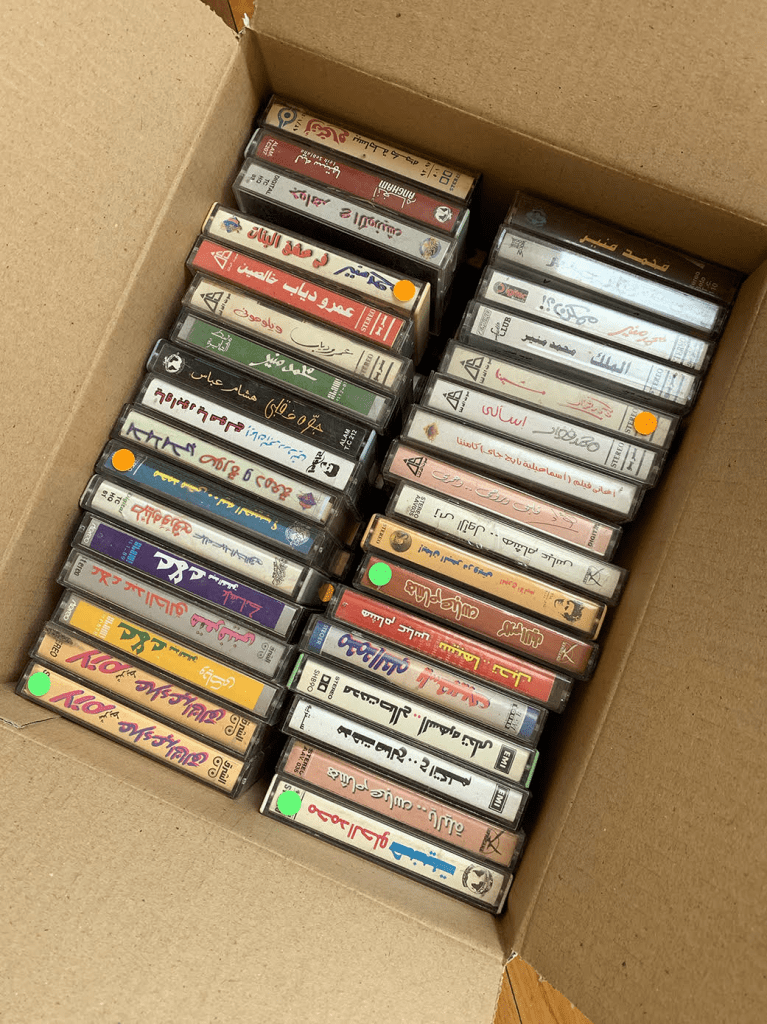
Digging for Hidden Names
Finding the tapes was the easy part. But tracking down the original artists? That’s where things got tricky. Many names were lost to time, and Amr had to dig deep — through flea markets, cassette dealers, and tip-offs from followers.

What the Covers Reveal About Egypt
Cassettes may be retro now, but their covers captured the shifts in design, technology, and pop culture from the 1960s to early 2000s. From airbrushed 90s flair to minimal 70s portraits, each one reflects a visual language shaped by global art movements like kitsch and pop art, reinterpreted for an Egyptian audience.
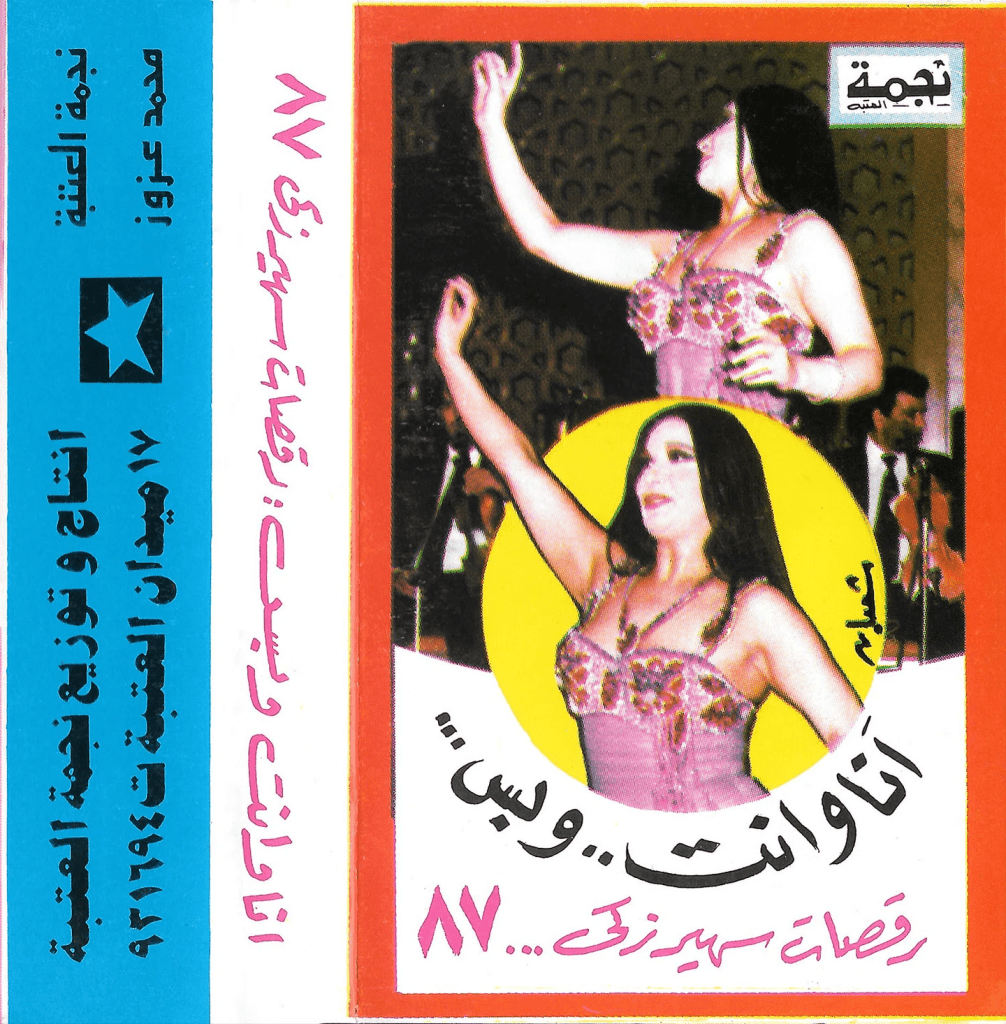
A Few of Our Favorite Covers
Anyaab (Fangs), 1981
Singers: Ahmed Adaweyah, Ali El-Hagar, Talaat Zein, Mona Gabr
Designed by: Hatem El-Sherbiny
Dracula-themed chaos. Blood-red, sharp typography, spooky font — it’s campy, creepy, and so iconic.
The design fully leans into horror aesthetics, making it one of the most unforgettable tape visuals of its time.

Bahebak…La by Al Massrieen, 1977
Designed by: Khaled Roshdy
A cracked ancient Egyptian statue and a collage of the band above — it’s quirky, bold, and couldn’t be more Masrieen.
It blends heritage with funk energy in the most unexpected way, setting the tone for the band’s signature style.
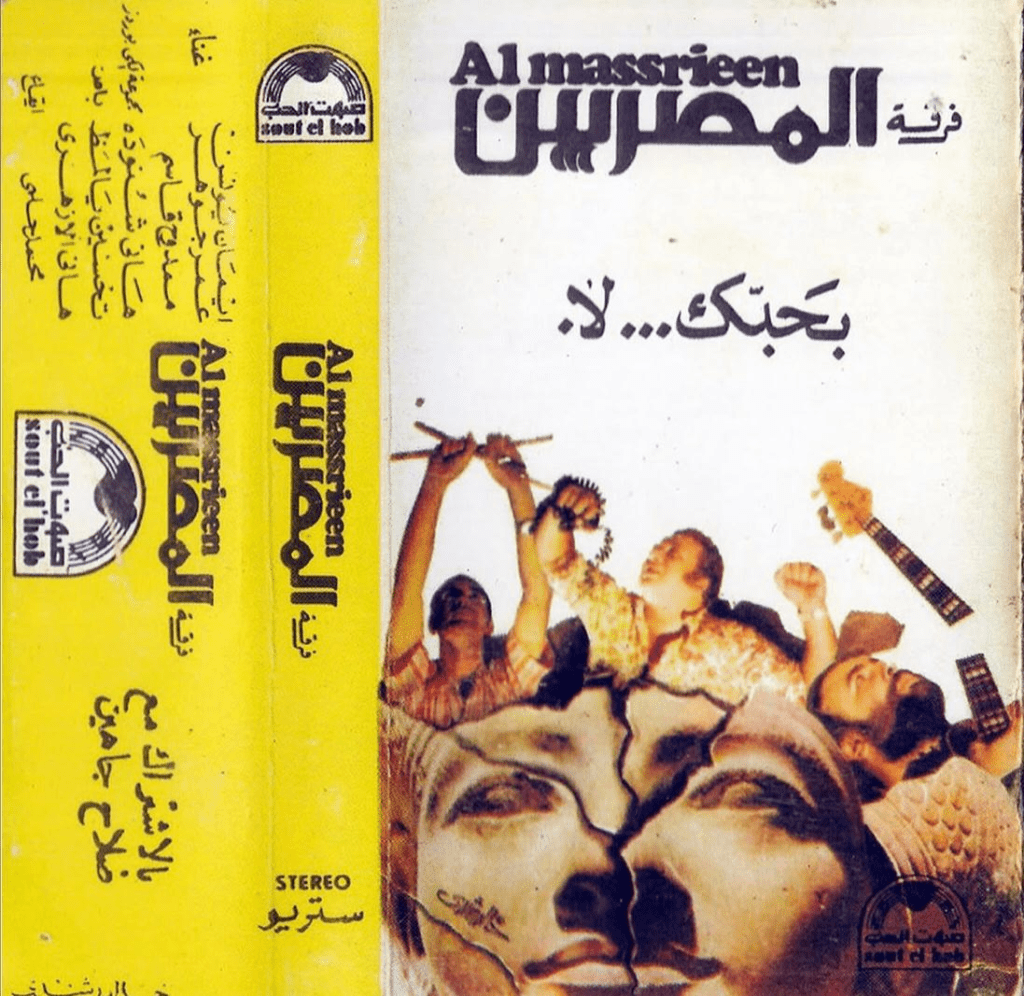
D. Ezzat Abou Aouf & Cats & Four M
Singer: D. Ezzat Abou Aouf
Designed by: Khaled Roshdy
No release date, but pure 1920s Gatsby energy. Ezzat in the middle, surrounded by the four M in pink, champagne front and center — timeless glam.
The art direction screams theatrical decadence, making the whole cover feel like a still from a vintage film.
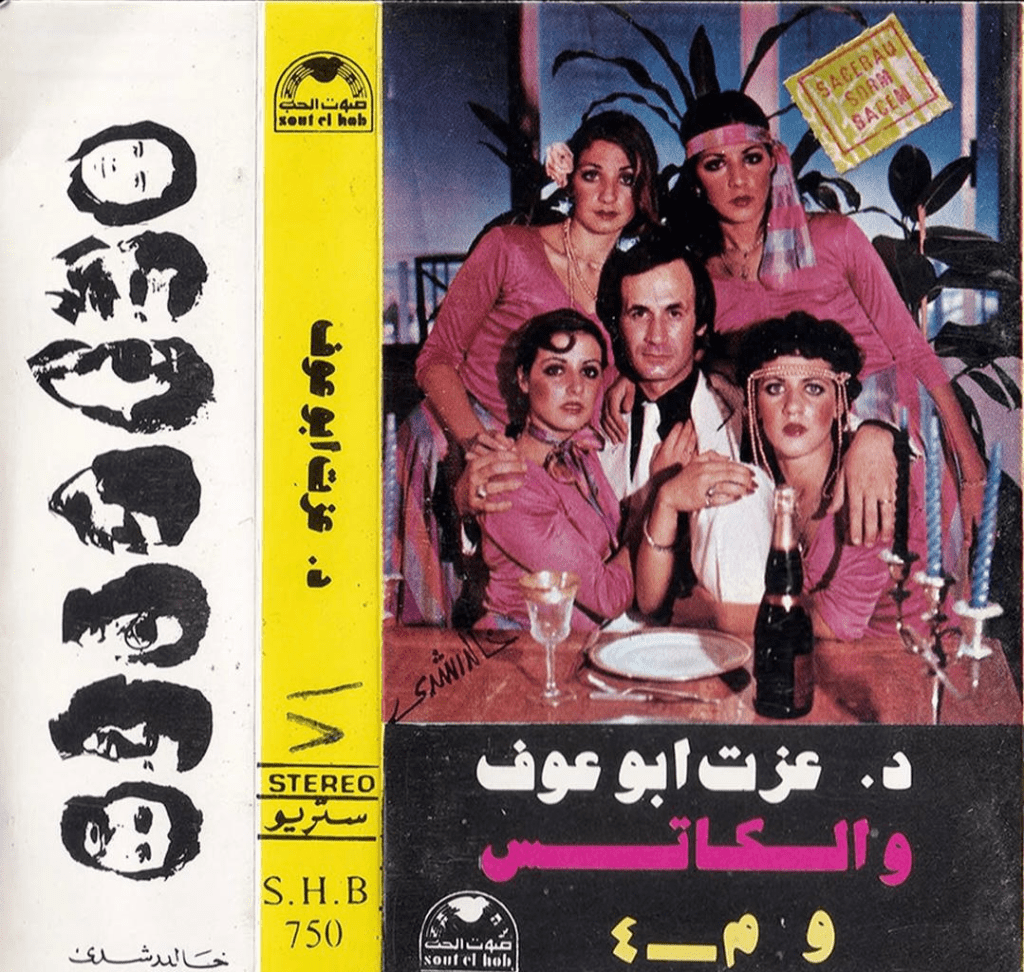
Ana El-Habib by Mohamed Attia, 2005
Designed by: Mind the Gap
Attia balancing on a rope, arms stretched out, a hint of blue in his hair — 2005 simply wasn’t ready.
It’s edgy, surreal, and weirdly poetic — the kind of cover that lingers in your head.

Albanat… Hobby Ana by Soad Hosny
Designed by: Mahmoud El-Gamal and Samir Hedeya
Soad in orange and green, one leg up, striking a pose. The outfit, the attitude — everything.
A pop of color, a burst of energy — she owns the frame with her signature charm and style.
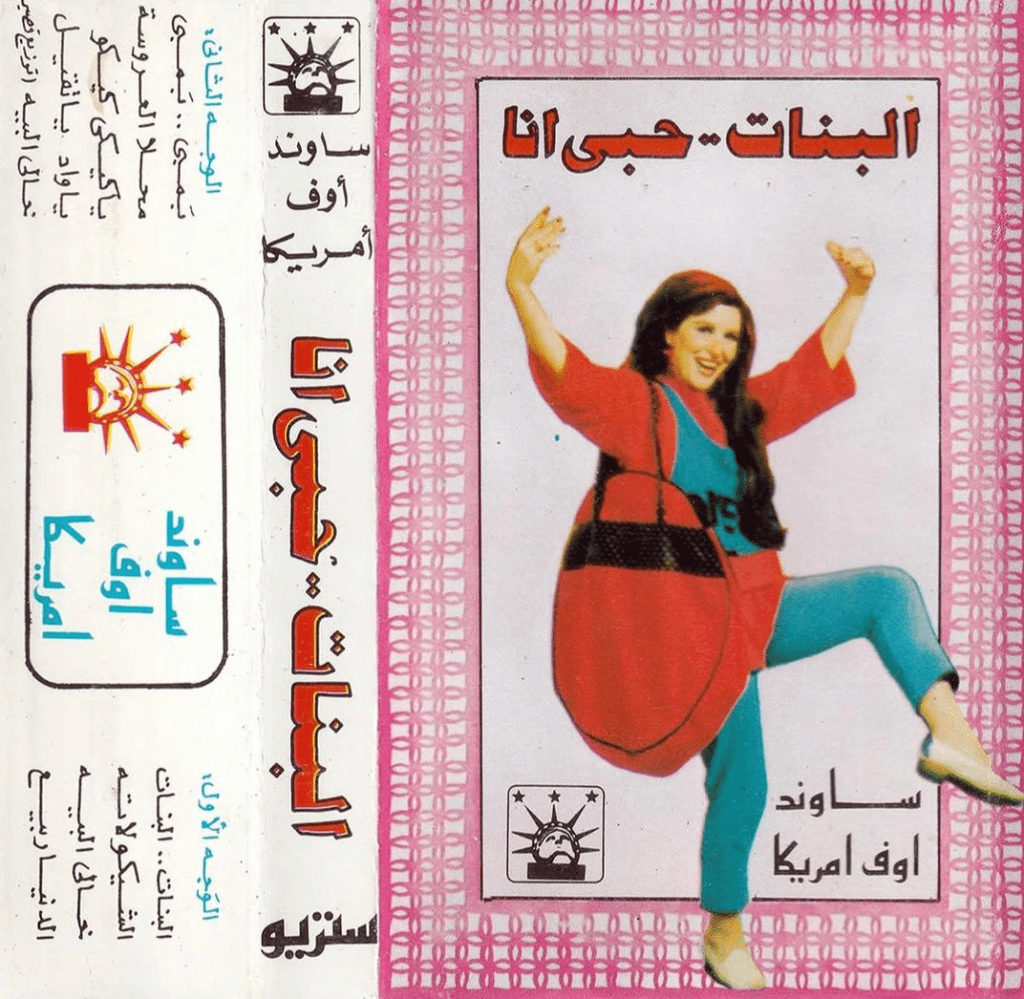
Not Just Nostalgia
Yes, it’s nostalgic. But it’s also a serious archive. Amr sees it as a way to honor the unsung heroes of Egypt’s music scene and preserve a unique chapter in visual culture. For him, it’s about reviving stories, not just sounds.
WE SAID THIS: Don’t Miss…Egypt’s Enduring Cassette Culture


